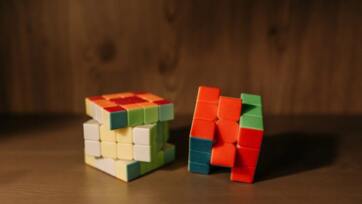Introduction
Family game nights help families connect and enjoy educational activities designed to teach children. Making a DIY learning quiz game is an exciting method to blend education with entertainment activities. Our board game entertains players while building their skills across many subject areas. This article demonstrates step-by-step how to make your own learning quiz board game, beginning with planning and ending with completion. Creativity with basic building supplies lets you build an original family night game.

Step 1: At first decide what your game wants to teach players.
Begin your DIY project by establishing what you’re learning quiz board game should achieve. Please specify what categories of education you want your game to cover. Start by choosing topics from different subjects for players to answer like basic knowledge, numerical issues and cultural training. Pick a game theme that fits the party players by age and preference. After selecting your topic remember to state if this game needs to be a competitive or cooperative activity. This choice will decide how players will use the board and interact with each other during the game.
Step 2: Choose Your Game Format
When starting your project, you need to select the format of your quiz board game. You may build a standard board game using player pathway movement, question-solving, and scorekeeping, but you can design something different. Our product will include difficult tasks players must finish before earning progression. Make separate sets of questions per round to create tougher gameplay. Designing the game system must entertain everyone who takes part and fit with how long and how well participants want to play.
Step 3: Design the Game Board
Move forward with the game board creation as you possess the necessary framework. Draw the game board basics directly onto large paper or cardboard. The board receives parts organized into separate areas for handling distinct question kinds. Different places on the game board will address math, history, science, language and additional topics. Keep space open on each game section where players may move their markers. Make the board display more attractive and simpler to follow. Decorate the game board with bright graphics since the test topics that players face.
Step 4: In this step, players will need to prepare challenge materials.
Make your quiz challenges before you start working on your board game project. Use the chosen format to put your questions on cards, sheets, labels, or small items inside holder boxes. Mix different types of questions that players will find suitable for their level of understanding. When making a family-friendly game, you should include questions that beginners can answer, plus harder ones for advanced players. Organize game questions to match both trivia and skill subjects you selected from prior preparation steps.
Step 5: Develop the Game Rules
All playing systems need specific playing guidelines. Your game kit should have written instructions showing users how to use the product. In the beginning, explain how people take turns moving across the board, responding to queries, and earning points or prizes. Detail the required actions when scoring gets tied, including answer correction methods and winning conditions. As you design the rules for smaller children, always make them easier to understand. After creating the rulebook, check if it serves its purpose and provides enjoyment during testing sessions with family members.
Step 6: Choose all necessary game pieces and supplies for the project.
Begin the process by collecting all the materials required for the game. Every participant should receive small game markers to indicate their position. You can use figurines or simple tokens of your choice. You will require dice for games that include rolling question cards and other game-specific items. Choose materials freely from recycled items and basic materials to make one-of-a-kind game elements. Our focus stays on making the fun items budget-friendly while remaining practical and easy to utilize.
Step 7: Include reward elements that enhance the gameplay experience
Including bonus functions will create better excitement for players. Include wild card options with random tasks or bonus questions for players to discover at will. Including a timer requires players to respond with speed limits during gameplay. The game pace becomes faster as players want to know the next item to guess before the suspense builds. Let players collect special points or rewards throughout the game to motivate them further to succeed beyond basic quiz completion.
Step 8: Test the Game
Begin with a small player group while testing the game to ensure it works as designed. Real-time testing lets you discover game problems at their points of occurrence. Some game parts may turn out harder than others, and you must simplify them for younger players. Ask your game testers for feedback and modify the game if needed to improve the experience for all players.
Step 9: Teach players to enjoy and grasp the educational content.
Your quiz game exists both for teaching and entertainment purposes. Use humour tricks and competition to teach players new skills through entertaining game activities. Include funny, easy-to-answer questions and fun, silly tasks that activate players' laughter. People will play the game frequently when they enjoy it. Your game should combine learnable material with entertaining obstacles to educate and entertain its players.
Step 10: Customize the Difficulty Level
As you design a quiz game, you should develop questions matching players' age or expertise level. Keeping questions direct and simple with supporting images eases learning for younger children in our game. You should provide harder questions and test specific topics such as advanced scientific or historical knowledge when playing with adult participants. Including easy and hard game settings lets kids and adults participate and enjoy the game equally.
Step 11: Create a Scoring System
The scoring system lets players monitor their development as they play and compete with others in the same game. Set up different values for capturing answers depending on the mode you want to play or level up gameplay difficulty. The game rewards participants with more points for solving harder and easier problems. Bonus points help players when they finish challenges or answer multiple queries without errors. Well-designed scoring tools help players stay involved and compete politely with each other at the game.
Step 12: Organize the Game’s Flow
The game must maintain speed and entertainment by developing clear rules for players. Each player needs simple guidelines about their turn sequence and should learn how to move on the board and when to pick up question cards. A straightforward process should direct players so they do not get lost. The game runs better when players use a die to see who will go first or move their pieces using a spinner. The system must run games progressively to keep players busy without excessive waiting periods.
Step 13: Make the Game Night Environment Happy and Enjoyable for All Players
Creating a positive mood remains vital for smooth family game night proceedings. Keeping the expected rules simple helps everyone enjoys their time together more while also accepting that exact perfection is not necessary. It’s about enjoying time together. Support friendly conversations and celebrate each player's responses despite wrong answers. During game time you can strengthen relationships while recalling previous history knowledge or sharing funny trivia thoughts.
Step 14: Reward Creativity and Participation
Foster creativity through the game by creating special prize options for players who take part actively. Each correct answer gives players a fun chance to challenge one teammate when they win. You can reward players with unexpected rewards when they develop clever solutions or present imaginative trivia responses. Recognizing creative ideas helps make the gameplay experience happier and more welcoming for everyone. Players stay invested in the learning process because it provides rewards that keep them entertained.
Step 15: Ask all participants to help design the game features.
A homemade board game allows everyone to participate in designing it, which makes building it enjoyable. Please invite your family members to share what they want the game to include, including question topics or challenges. This approach brings the game to a wider player group and adapts it to their preferences. Asking kids to take part in making game elements lets them add their support to the entire game project. The increased participation will make people want to participate more while joyfully recommending their input to others.
Conclusion
Family night is ideal for building education and strengthening relationships by creating a homemade learning quiz game. Your game will be more effective when you pick its learning purpose, create interesting activities, and match activities to your family's age preferences. Before starting the family game session, perform testing first to make sure the game rules balance fun and learning. Using imagination and preparation will bring hours of shared learning through playing together.








